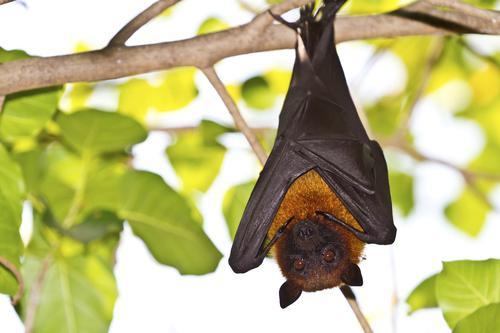How Do We Stop Future Outbreaks?

Marburg, a virus similar to
Ebola, has hit the radar in the African country of Uganda, raising
concerns about another deadly outbreak. With two lethal viruses
threatening public health, many are questioning why these contagions
seem to be flaring up more often — and more important, what we can do to
avoid them in the future.
The current Ebola outbreak originated in West Africa and has killed more than 3,800 people, more than all other past outbreaks combined. The first Marburg death was confirmed recently in Kampala, Uganda. Both viruses cause hemorrhagic fevers and are passed from animals to humans, which has experts examining how humans and African wildlife interact.
One mystery surrounding these viruses is
where they live between outbreaks, when they aren't infecting humans,
author and Ebola expert David Quammen told National Geographic. For
example, health officials know Ebola likely goes dormant in an animal,
called its "reservoir host," but they have yet to identify exactly which
species. At least one of the suspects is the fruit bat, which is
believed to host several other viruses (including
Marburg and SARS) without getting sick. These bats usually live in
large, tightly packed groups, allowing the virus to spread easily among
the animals.
In the past, there was enough
room in Africa for humans and fruit bats to exist without much contact.
Deforestation has changed this, according to an editorial in the Guardian.
West Africa was once covered in rain forests, a common habitat for
fruit bats. During the past decade, loggers have stripped the land,
reducing the habitable area for the animals. Laws governing more
responsible logging practices in that part of the world could help
reduce the risk of future outbreaks, but civil wars and political corruption are slowing progress.
As the forests shrink, the
mining industry has been moving more people into Africa to tap its vast
mineral reserves. These miners often have to travel through high
concentrations of bats, which increases the likelihood of someone being
infected. Like the rain forests, mines are also popular habitats for
animals that might carry these viruses, and miners have been among the victims in
several Marburg outbreaks in the past. In 1998, one of the largest
Marburg outbreaks to date occurred in Congo, in an area pocked with
several illegal gold mines. During the course of the epidemic, there
were 149 cases and 123 deaths.
But animals in the wild are not
the only threat to spread these viruses; wild animals — including
primates, birds, and reptiles — captured and sold for food or as exotic
pets are also a risk. Some experts believe the illegal wildlife trade
market — which brings in between $10 billion and $20 billion each year
— is one of the greatest threats due to its global reach and the lack of
health standards. "As wildlife is traded between hunters, middle
marketers, and consumers, there are, quite literally, billions of
opportunities for disease transmission among wildlife, humans, and
domestic animals," wrote Timothy Bouley and Sara Thompson for the World Bank. Research has found that outbreaks resulting from wildlife trade have
caused hundreds of billions of dollars of economic damage globally. It
has been such a problem the researchers suggested that eradicating the
illegal trade market would be more practical and effective at stopping
outbreaks than attacking the virus directly.

No comments:
Post a Comment